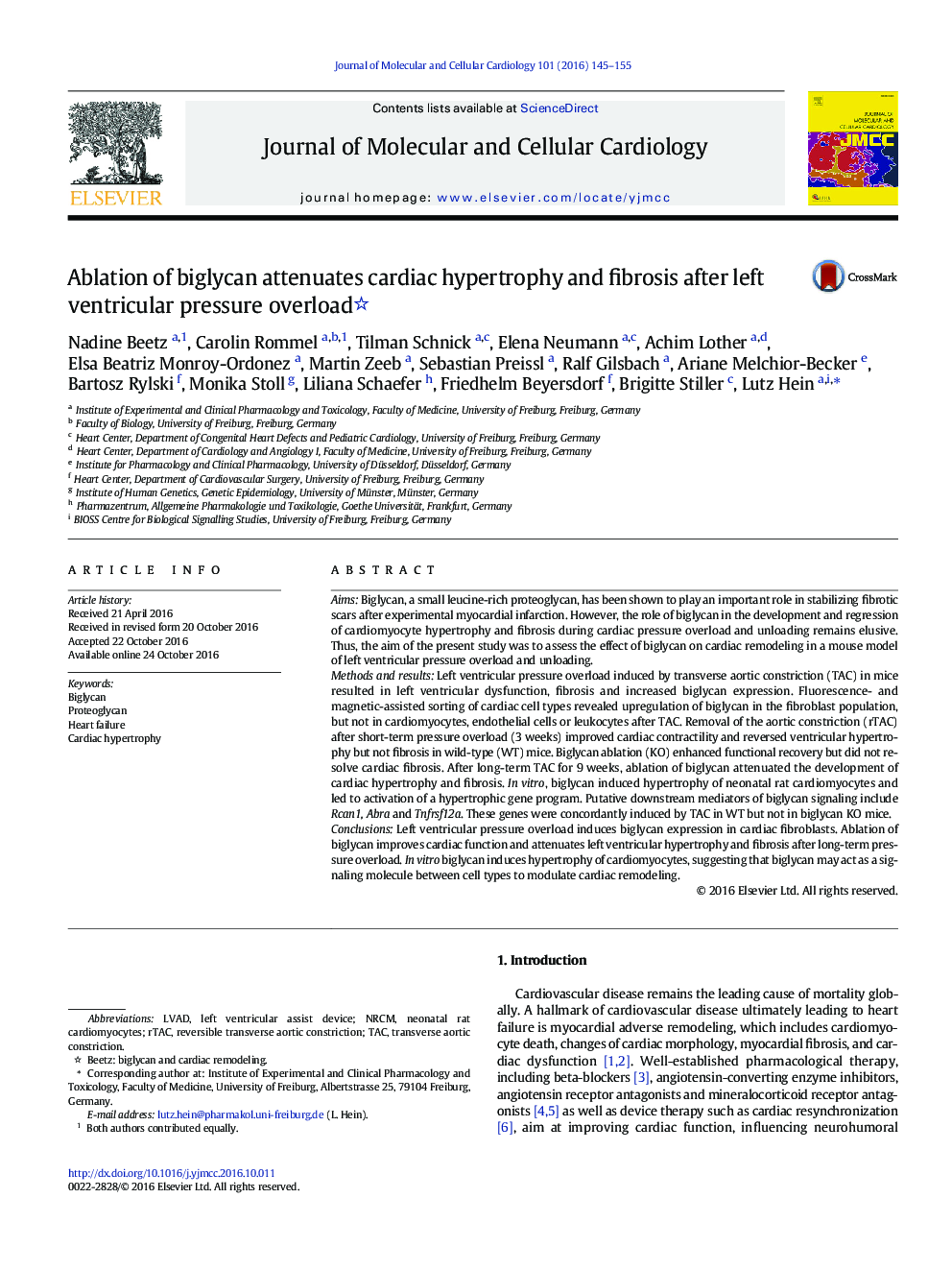| Article ID | Journal | Published Year | Pages | File Type |
|---|---|---|---|---|
| 5533677 | Journal of Molecular and Cellular Cardiology | 2016 | 11 Pages |
â¢Pressure overload-induced cardiac dysfunction but not fibrosis recovers after unloading.â¢The small leucine-rich proteoglycan biglycan increases after pressure overload.â¢Fibroblasts were identified as the main source of biglycan in the pressure-overloaded heart.â¢Ablation of biglycan in mice ameliorates pressure overload-induced cardiac remodeling.â¢Biglycan induces a pro-hypertrophic gene program in cardiomyocytes.
AimsBiglycan, a small leucine-rich proteoglycan, has been shown to play an important role in stabilizing fibrotic scars after experimental myocardial infarction. However, the role of biglycan in the development and regression of cardiomyocyte hypertrophy and fibrosis during cardiac pressure overload and unloading remains elusive. Thus, the aim of the present study was to assess the effect of biglycan on cardiac remodeling in a mouse model of left ventricular pressure overload and unloading.Methods and resultsLeft ventricular pressure overload induced by transverse aortic constriction (TAC) in mice resulted in left ventricular dysfunction, fibrosis and increased biglycan expression. Fluorescence- and magnetic-assisted sorting of cardiac cell types revealed upregulation of biglycan in the fibroblast population, but not in cardiomyocytes, endothelial cells or leukocytes after TAC. Removal of the aortic constriction (rTAC) after short-term pressure overload (3Â weeks) improved cardiac contractility and reversed ventricular hypertrophy but not fibrosis in wild-type (WT) mice. Biglycan ablation (KO) enhanced functional recovery but did not resolve cardiac fibrosis. After long-term TAC for 9Â weeks, ablation of biglycan attenuated the development of cardiac hypertrophy and fibrosis. In vitro, biglycan induced hypertrophy of neonatal rat cardiomyocytes and led to activation of a hypertrophic gene program. Putative downstream mediators of biglycan signaling include Rcan1, Abra and Tnfrsf12a. These genes were concordantly induced by TAC in WT but not in biglycan KO mice.ConclusionsLeft ventricular pressure overload induces biglycan expression in cardiac fibroblasts. Ablation of biglycan improves cardiac function and attenuates left ventricular hypertrophy and fibrosis after long-term pressure overload. In vitro biglycan induces hypertrophy of cardiomyocytes, suggesting that biglycan may act as a signaling molecule between cell types to modulate cardiac remodeling.
